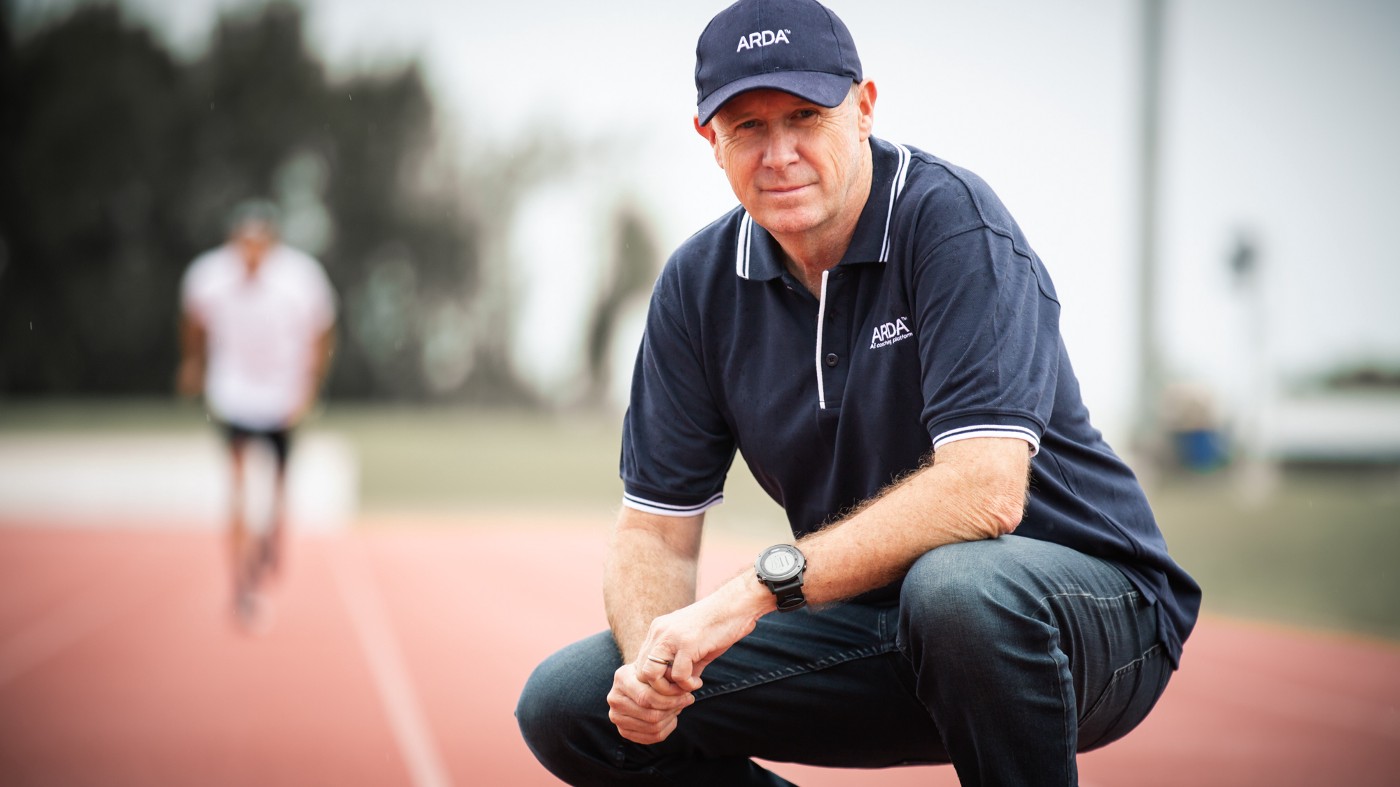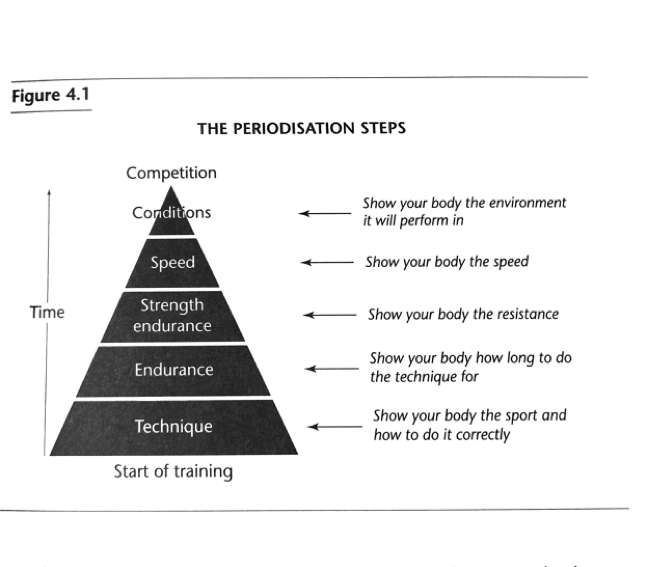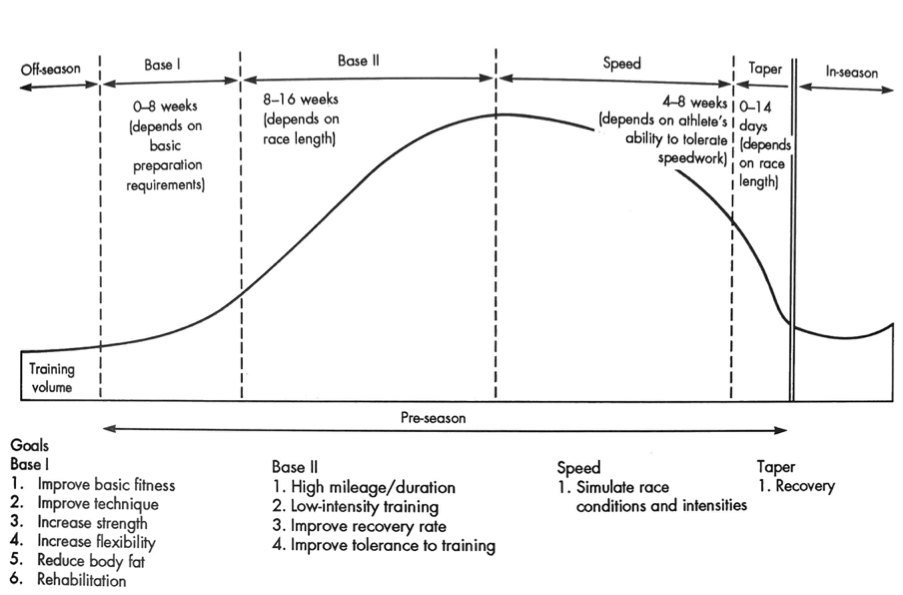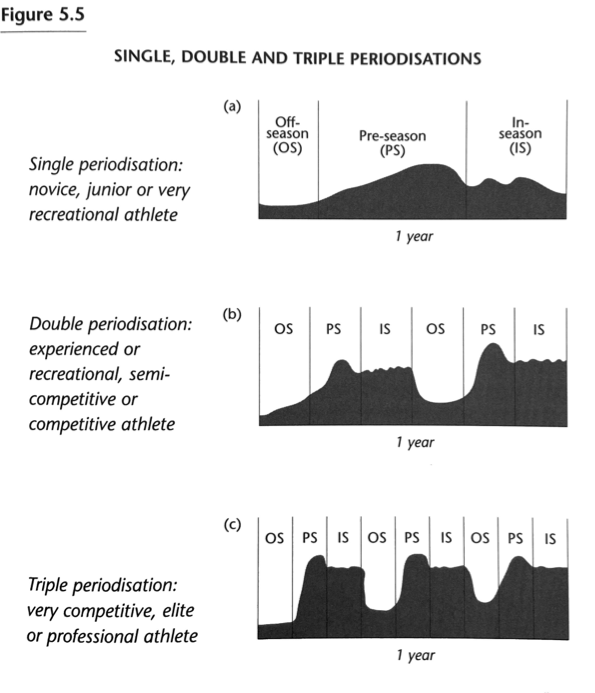Jon Ackland was an early inspiration of mine. It was possibly him who first introduced me to the term Periodisation through articles in NZ Triathlon magazines in the early to mid 90’s. Then in the early 2000’s I attended a number of seminars he held about Ironman preparation and took on a lot of his philosophies from these seminars.
In his books The Power To Perform: A Comprehensive Guide to Training and Racing for Endurance Athletes and Personal Best: Secrets to Success in Sport from Beginners to Winners both of which I believe are now out of print, as well as he discusses in great detail the process for periodisation. And in Precision Training he employs these concepts into over 100 training programmes for a range of sports. Jon established Performance Lab – which delivers a range of coaching and performance services and now Arda which is software company that provides virtual coaching through wearables.
This is the nineth article in my series about Periodisation (English spelling with an ‘s’, American spelling is traditionally with a ‘z’) and the methodologies from coaches that guided my early philosophies around periodisation of training seasons and event build ups. Have a read of last weeks article about Dave Salo and what he recommends from in Complete Conditioning for Swimming:
Periodisiation is a method for structuring training through a season leading to a race or an event. it has been a concept that is grown in scope and developed over the decades to the modern era.
Jon describes it as a logical conversation with your body:
- Show your body the Sport;
- Show your body the Skills;
- Show your body the Distances or Duration;
- Strengthen your body up;
- Bring in the Speed and the Specifics; then
- Show your body the Terrain, the Environmental Conditions, the event Atmosphere and Pressure, and the Course
This can be summarised in a chart from Personal Best.
Seasons
Jon breaks a season or build up into three key phases or blocks of training:
- Pre-Season,
- In-Season, and
- Off-Season.
They loosely are the build up, the competition and the recovery.
Pre-Season
Pre-Season is all about preparation and gradually introducing your body to everything that will happen on race day in order to get and to be ready for the event. This will last for eight to sixteen weeks and may include several smaller events in the build up.
The three secrets for this phase are: preparation, preparation and – you guessed it – preparation.
Pre-Season can be broken down into sub-phases that Jon refers to as Base, and Speed Phases. Base training forms a foundation of fitness and speed training prepares you for the demands of racing.
Base Training
This phase can last as long as six months, but this will depend on the length of your build up and how much time you have available before your event, as well as your level of fitness when you commence this build up.
This phase will mainly consist of high milage/long duration workouts at a low intensity. The aim of these sessions is to improve your aerobic ability and muscular endurance.
As you work through this phase, your tolerance to exercise improves as you adapt to the training load. You will recover quicker and this base work will allow you to cope and adapt to the speedwork that will follow.
Base training itself is split into two phases Base 1 and Base 2.
Base 1 – Preparation Phase
- Show your body the Sport;
- Show your body the Skills;
The goal of this phase is to prepare your body to the type of exercise you are planning to compete in. This is also the time to work on technique, improve strength and flexibility, reduce body fat and rehabilitate from injury.
Base 2 – Volume Phase
During Base 2 volume is gradually increased. Training is still done at a low intensity, although small amounts of speedwork can be included.
How much milage should this phase include? That will depend on your ability. If you are new to the sport your capacity for work will be less than that of an experienced athlete and your recovery from each workout will be slower. Keep in the back of your mind when you read a pro-athletes training programme, it’s taken them years of training to build to that amount of volume.
Jon recommends splitting Base 2 into three further parts. During the first third of this block of training keep things very easy. In the middle third include hill training and then towards the end of the base include up tempo training. This will help you prepare for the speed phase.
- Show your body the Distances or Duration;
- Strengthen your body up;
Speed Training
Speed follows the Base Training. Now is your opportunity to take advantage of the fitness you have developed in the Base Phase.
This phase will last four to eight weeks and this is where your performance gains are made.
In this phase training volume decreases and intensity is gradually added into the training. Allowing the body to adapt to this higher workload progressively.
There are a number of ways to include speedwork into your training from intervals, time trials, sprint training and event low-key events/racing.
Too much speedwork and your could get injured or overtrained, not enough speedwork and you will under perform at your event.
This phase also needs plenty of recovery built into it. Make sure that you do your slow sessions slowly, so that when it comes time to HAMMER your speed sessions you can.
- Bring in the Speed and the Specifics; then
- Show your body the Terrain, the Environmental Conditions, the event Atmosphere and Pressure, and the Course
Taper/Peaking
The last two to fourteen days of the Pre-Season are set aside for a Taper/Peaking.
This is where the training volume is eased back to allow your body to freshen up.
For events that are about an hour in duration two to four days is probably enough time. But for an Ironman two weeks is probably best. marathon tapers are typically about ten days.
A common mistake with a taper is that you remove the intensity out of your training, this is important to maintain the intensity just reduce how much you do of it (or have more recovery between reps).
In-Season
The competition season is not always used. For big events (read long-duration), the In-Season maybe the day of the event only. For shorter events you may choose to race regularly over a period of between four and twelve weeks.
This season is not about training to improve but training to maintain performance. Jon summarises this as the Pre-Season is about train, recover, train again; and the In-Season is about race, recover and race again.
Unfortunately, you can’t maintain peak performance year around. Training has to be based around a group of goal events per year. Jon uses the example of four to eight short events being tolerable for most athletes, for longer distance events this drops to one to two events. Yes, there are examples out there of athletes that do many more, but I’d suggest they are not racing nor training optimally to get their best performance.
Off-Season
Once you’ve raced your season (however long it was), the aim now is to recover from everything you’ve done thus far. This period may last four to six weeks in length.
Jon expands on the reason for this duration, as most people will cease to feel muscle aches and pains from their event (even if it’s an Ironman) after about a week of minimal or no training. This season is all about mental recovery, a break from the routine and structure of the proceeding build up.
Some athletes are worried about loosing performance through taking a break. Yes there will be a small performance loss, but you will be mentally and physically prepared to come back stronger.
During this period mix things up and try different activities and be guided by the these three words: relax, forget, unwind.

Number of Seasons Per year
It is reasonably common to have two or three build ups each year. It maybe a late winter marathon before preparing for a summer Ironman. Or maybe you are a marathon runner who prepares for an early winter marathon, then another in late winter before the main event in summer. There are a number of possibilities on how to develop the season. In terms of how hard these builds ups are, the first one might be relatively easy, the second moderate and then a harder build up.
Summary
Jon Ackland builds a season around 1-3 build ups, with three key phases Pre-Season, In-Season and Off-Season. The Pre-Season is focused on training, the In-Season focused on racing, with the Off-Season focused on recoery.
The Pre-Season is further broken down into the Base (both Base 1 & 2) and then Speedwork phases. Where the Base phases build fitness and prepare the body for speedwork that follows.
Gives sports people the guidance they need to train precisely, efficiently and enjoyably in 27 sports including multisport, rowing, road cycling, rugby, soccer, netball, hockey, golf, cricket and general fitness. With 100 detailed training plans.




